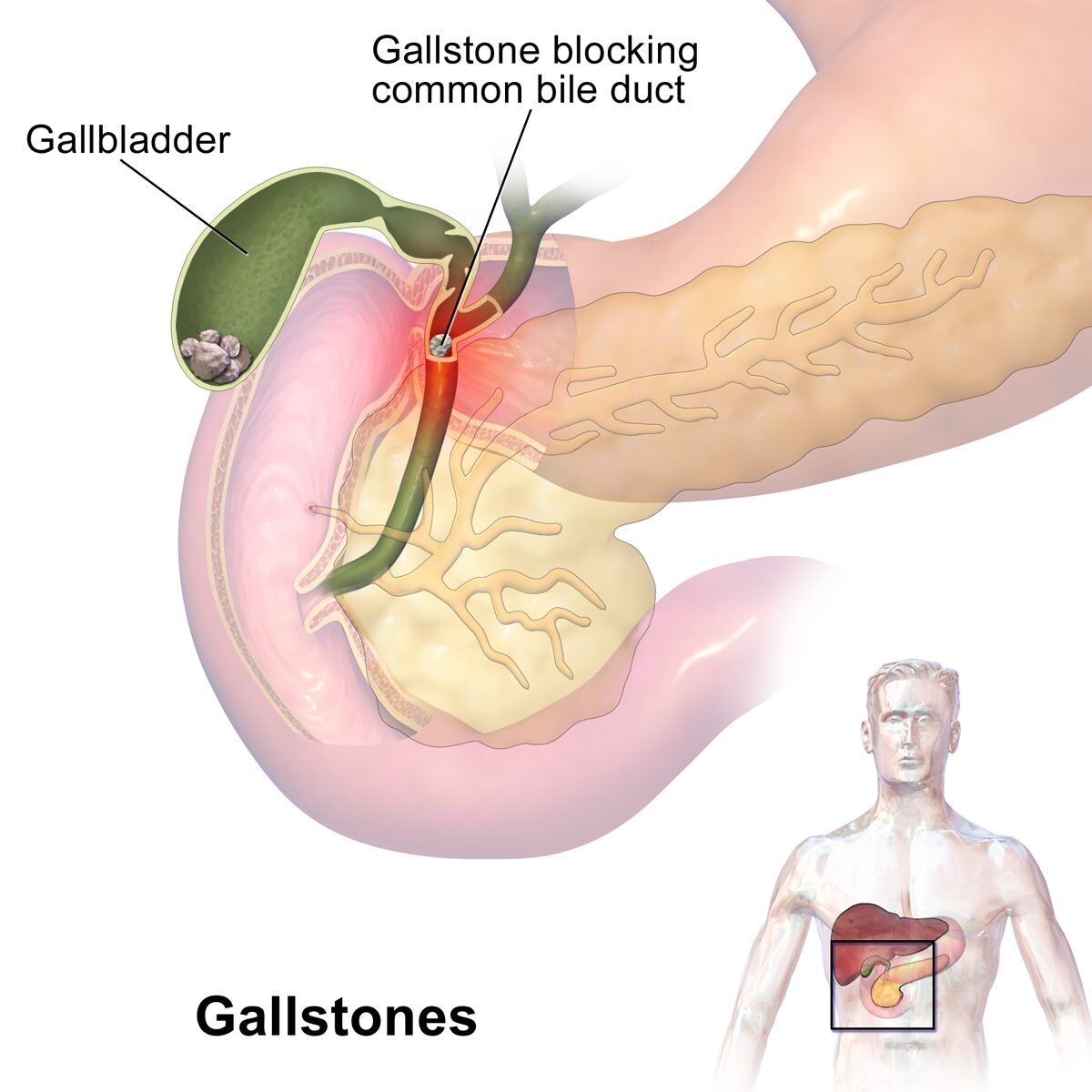Gallstones: Symptoms, Causes, Treatment
What are the symptoms of gallstones?
Gallstones can cause a variety of symptoms, which can range from mild to severe. Some people with gallstones may not experience any symptoms at all. Common symptoms of gallstones may include:
- Abdominal pain: The most common symptom of gallstones is pain in the upper right or center of the abdomen. The pain may be dull, sharp, or cramp-like and may come and go.
- Back pain: Some people with gallstones may experience pain in the upper back, between the shoulder blades.
- Pain after eating: Pain may worsen after eating, especially after eating fatty or greasy foods.
- Nausea and vomiting: Some people with gallstones may experience nausea and vomiting, especially if the gallstones are blocking the bile ducts.
- Indigestion: Indigestion, or discomfort or pain in the upper abdomen, may occur, especially after eating fatty or greasy foods.
- Bloating: Some people with gallstones may experience bloating and gas.
- Jaundice: In severe cases, gallstones can block the bile ducts, leading to jaundice, a yellowing of the skin and whites of the eyes.
- Fever and chills: If gallstones cause inflammation or infection of the gallbladder (cholecystitis), fever and chills may occur.
It’s important to note that symptoms of gallstones can vary widely, and not all individuals with gallstones will experience all of these symptoms. If you are experiencing symptoms of gallstones, it’s important to consult with a healthcare provider for an accurate diagnosis and appropriate treatment.
What are the causes of gallstones?
Gallstones are solid particles that form in the gallbladder, a small organ located beneath the liver. The exact cause of gallstones is not fully understood, but several factors can contribute to their formation. Common causes of gallstones include:
- Excess cholesterol: Most gallstones are made primarily of cholesterol. When there is too much cholesterol in the bile, it can form crystals and eventually gallstones.
- Bile composition: Bile is a fluid produced by the liver to help digest fats. Imbalances in the composition of bile, such as high levels of cholesterol or bilirubin (a waste product), can contribute to the formation of gallstones.
- Gallbladder motility: The gallbladder must contract and release bile into the digestive tract to aid in digestion. If the gallbladder does not contract properly, bile may become stagnant and lead to gallstone formation.
- Obesity: Obesity is a risk factor for gallstones, as excess body weight can increase cholesterol levels in the bile.
- Rapid weight loss: Losing weight quickly, such as through crash dieting or weight loss surgery, can increase the risk of gallstones.
- Certain medical conditions: Conditions that affect the normal functioning of the gallbladder or bile ducts, such as cirrhosis of the liver or certain blood disorders, can increase the risk of gallstones.
- Certain medications: Some medications, such as those that lower cholesterol levels, can increase the risk of gallstones.
- Genetics: Gallstones can run in families, suggesting a genetic predisposition to the condition.
It’s important to note that not everyone with risk factors for gallstones will develop them, and some people with gallstones may not have any symptoms. If you are at risk for gallstones or are experiencing symptoms, it’s important to consult with a healthcare provider for an accurate diagnosis and appropriate management.
What is the treatment for gallstones?
The treatment for gallstones depends on the presence or absence of symptoms and the risk of complications. Treatment options may include:
- Observation: If gallstones are not causing symptoms, they may not require treatment. However, regular monitoring may be recommended to watch for any changes.
- Medications: Medications to dissolve gallstones (such as ursodeoxycholic acid) may be prescribed for some people, particularly those who are not good candidates for surgery.
- Surgery: The most common treatment for symptomatic gallstones is surgery to remove the gallbladder (cholecystectomy). This procedure is usually done laparoscopically, using small incisions and a camera to guide the surgery. Removing the gallbladder eliminates the possibility of future gallstone formation and is generally well tolerated.
- Endoscopic procedures: In some cases, gallstones can be removed using endoscopic retrograde cholangiopancreatography (ERCP). This procedure involves passing a flexible tube with a camera through the mouth and into the bile duct to remove the stones.
- Shock wave lithotripsy: This non-invasive procedure uses shock waves to break up gallstones, allowing them to be passed naturally through the digestive system.
- Lifestyle changes: Making dietary changes, such as reducing the intake of fatty or greasy foods, and maintaining a healthy weight may help prevent gallstones from forming or recurring.
The appropriate treatment for gallstones depends on several factors, including the size and number of stones, the presence of symptoms, and the overall health of the individual. It’s important to consult with a healthcare provider for an accurate diagnosis and to discuss the best treatment options for your specific situation.




